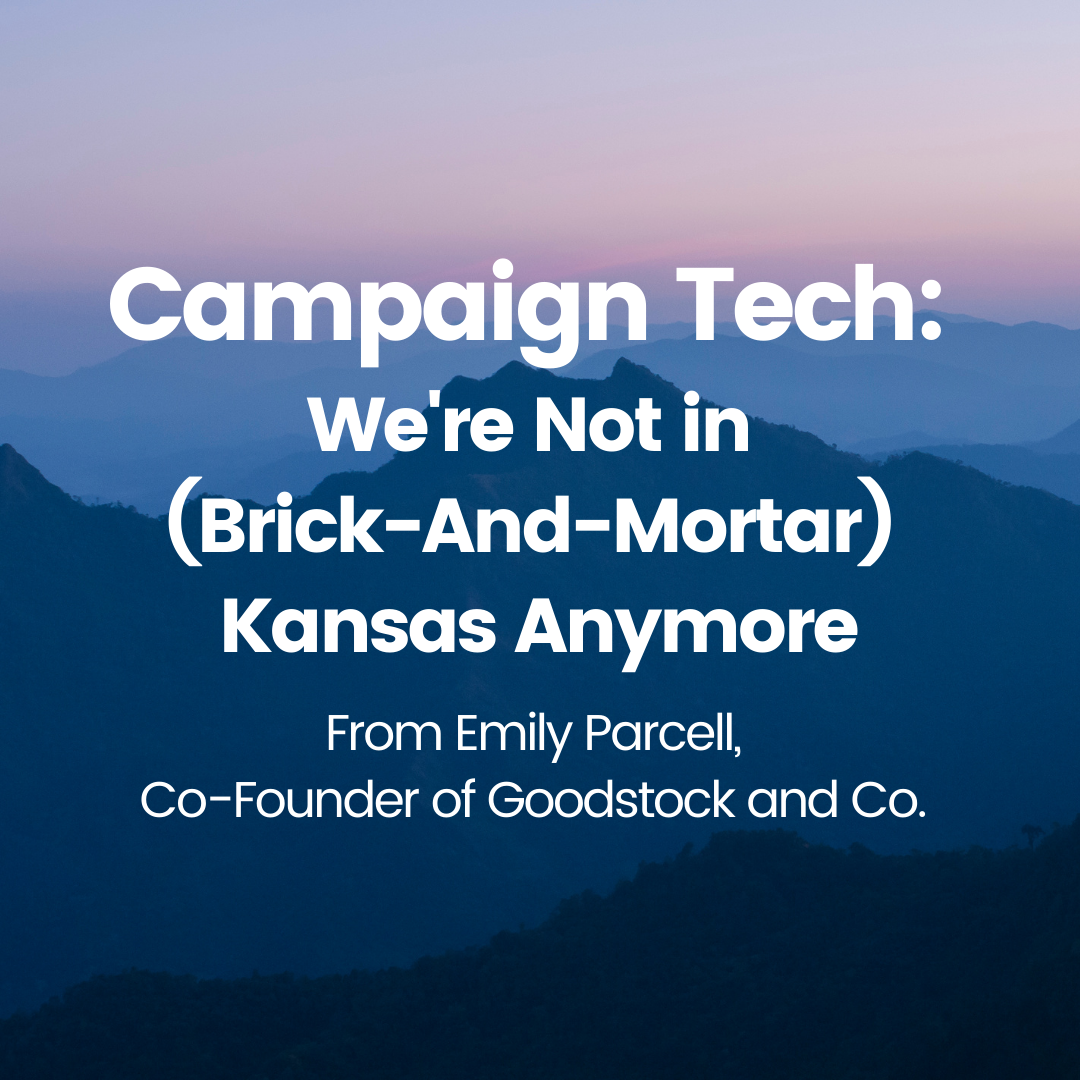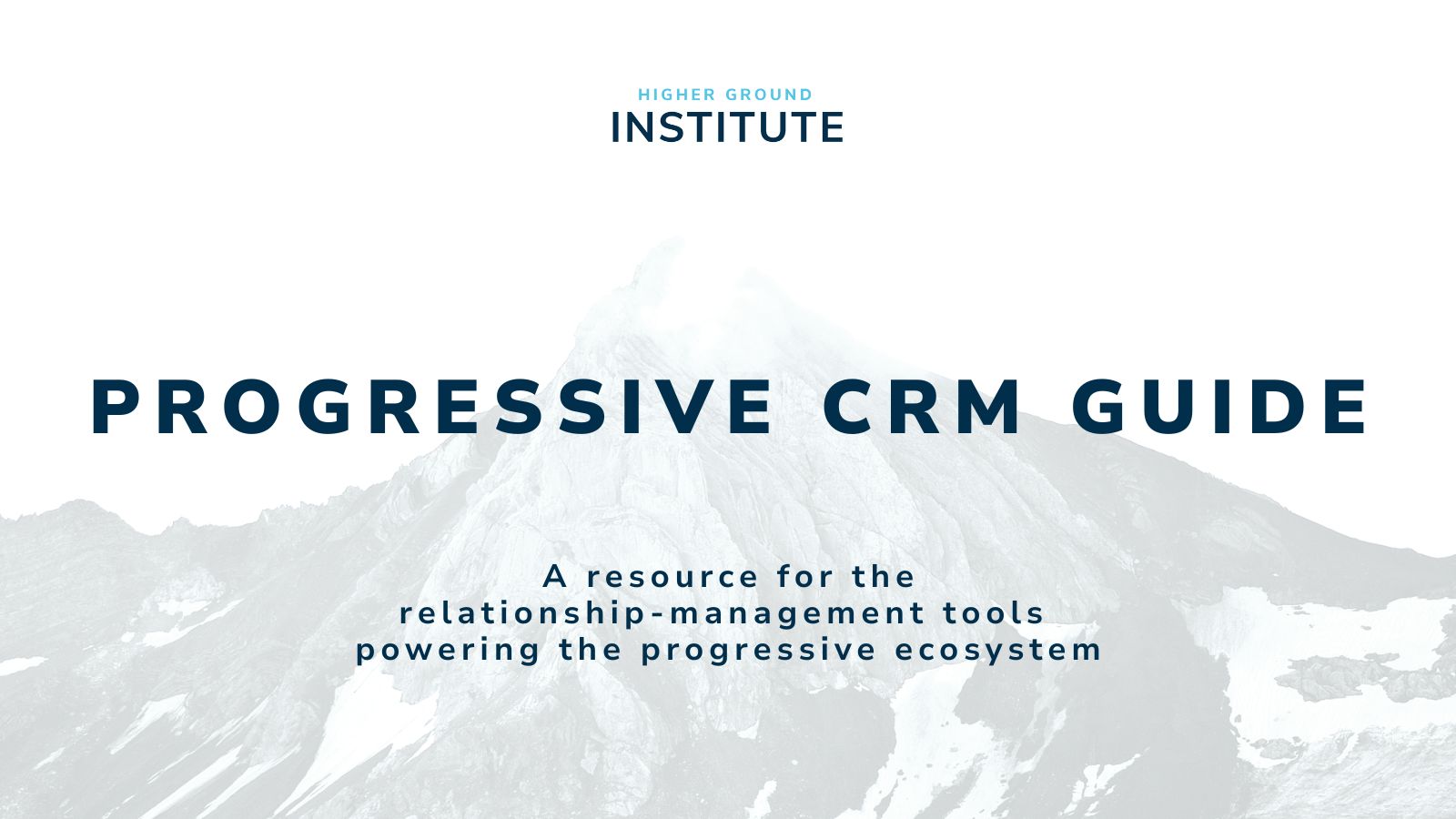This blog post was written by Emily Parcell, co-Founder of Goodstock & Co, a Higher Ground Labs Cohort 4 portfolio company .
Honored as a top “40 Under 40” in 2017 by the American Association of Political Consultants, Emily Parcell’s decade-long campaign resume includes managing a state legislative program that flipped control to Democrats, field and political roles on three Presidential Caucus campaigns, and managing President Barack Obama’s 2008 victory in Indiana. Most recently, Emily served as a senior advisor on Elizabeth Warren’s presidential campaign.
Emily Parcell is currently a Partner at Wildfire Contact and founded Goodstock & Co., an ecommerce campaign merch platform, with Josh Grossfeld.
As the world began shutting down last March, I was in one of the worst possible places. Campaign Hangover Zone. Detachment, frustration and general “now what”-ness overtook me on an early morning flight from Boston to Des Moines. I’d been here before. December 2000. January 2004. November 2016. And now March 6, 2020.
The night of February 3, I sat in a boiler room in West Des Moines, waiting on results from the Iowa Caucus. We all know how that unraveled. Or didn’t. Our team headed to the airport to hop a chartered off-off-off brand flight to New Hampshire, where I curled up in my seat and avoided the pack of press and staff around me. I didn’t need the app to work. I knew it wasn’t the night we’d been hoping for.
And I felt like absolute garbage. My head pounded. I told myself it was my body begging me to get more sleep at night. Nothing I hadn’t experienced at the end of other campaigns. Except for the hacking, body-contorting cough that had gripped me for a week and showed no signs of letting up. “Power through, Parcell. Power through,” looped in my mind as we headed east.
Super Tuesday loomed, with limited resources stretched across an ungodly number of state nominating contests racing at us within days of each other. Our strategy leaned heavily on a small corner of the headquarters, a bullpen decorated with holiday lights and homemade signs. A team of a dozen people, give or take, huddled behind laptops with noise cancelling headphones, quietly directed millions of volunteer texts and calls in all corners of the country. Blissfully unaware we were living the last month of the election with campaign offices, that corner of HQ felt revolutionary. I found myself flashing back to my first presidential campaign, dialing away in a borrowed law office striving for the goal of 80 contacts a night.
It was hard to believe how far we had come in 20 years. It was unfathomable how far we would go in the next eight months.
A week after my angst-filled flight from Boston, germ theory and misinformation began to fuse together a time-lapse nuclear bomb and detonate it smack in the middle of the 2020 election cycle. From their quiet virtual bullpens, tech-savvy teams of operatives, developers and visionaries banded together to meet the moment. Overcoming the unique chaos of campaigning in “Shutdown America,” operatives armed with the latest tech tools took back the White House, defended a Democratic majority in the U.S. House, and topped it off with a twin victory for the ages in Georgia, of all places.
Democrats, following an extended party primary and in the midst of a horrifying global pandemic, turned the 2020 election into a complete sweep at the federal level. The political ecosystem leaped into the future with rousing success through an explosion of campaign technology adopted from necessity. Recognizing technology as campaign strategy is the next step in campaign innovation.
The proliferation of tech solutions, tools and ongoing development in the political space gives campaigns at every level unprecedented access to strategy on a national scale. A well-trained organizer with the right tech solution can mobilize thousands of volunteers from their basement apartment. A catchy Tik Tok and link to an online merch store stocked with $25 t-shirts can snowball into a massive grassroots donor army. All at the click of a button. All with off-the-shelf political tech available at affordable prices.
No presidential bank account required. No MSNBC platform necessary.
As campaigns gear up for 2022, they must internalize the brick-and-mortarless reality we find ourselves in. Do we need an office? Can staff and volunteers be located anywhere? These are some of the earliest questions many are dealing with. To this list, I would argue, they should add “Which tech tools will maximize my volunteer capacity? Which tools will juice my grassroots fundraising? Which tools can push my message through influential networks? Which tools can make me more efficient with my time? Which tools can make my candidate more efficient with their time?”
2020 changed everything. We no longer live in a brick-and-mortar world. It’s a challenge campaigns had to solve for last November. It’s a reality campaigns from now on should exploit.
The era of tech on the campaign trail is upon us.
Smart campaigns will internalize this. Winning campaigns will get there early.



